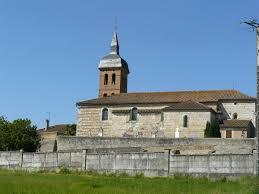Church of des Mariniers
The Mariners Church is located in Saint-Sixte, in the region of New Aquitaine. In the 1500s, the population consisted mainly of mariners, giving the church its name. The church was built in the 16th century; then restored and enlarged in the last quarter of the nineteenth century. In 1821, the mariners built a new chapel adjoining the church and dedicated it to St. Catherine. Inside, visitors can admire an ex-voto of great rarity: the model of a nineteenth century sailboat.
About this building
The Mariners Church is located in Saint-Sixte, in the region of New Aquitaine. Saint-Sixte was two hamlets situated on the banks of the Garonne: the Double and Port of Bonneau. The population consisted of mariners, craftsmen attached to river navigation, and also peasants. The various floods, and in particular the great flood of 1875, made the two hamlets uninhabitable.
A new settlement, out of reach of the floods of the Garonne, was built upon the first terrace from the sixteenth century. This is where the current church of the sailors is found. From the original church, built at the beginning of the 16th century, the walls and supports of the nave, the side chapels, the choir and the lower levels of the belfry remain. In 1821, the sailors built a new chapel adjoining the church and dedicated it to St. Catherine. The building was restored and enlarged in the last quarter of the 19th century.
The church, built of stone granite and sandstone, has a single nave extended by a choir, a bell tower on the north facade and two chapels that form the transept. The church has two beautiful carved portals, to the south and west, which are unfortunately unfinished. There is also keystones carved with decorations, some of which painted.
Inside, visitors can admire an ex-voto of great rarity: a scale model sailboat with the inscription ‘Bonne Aimée’.




